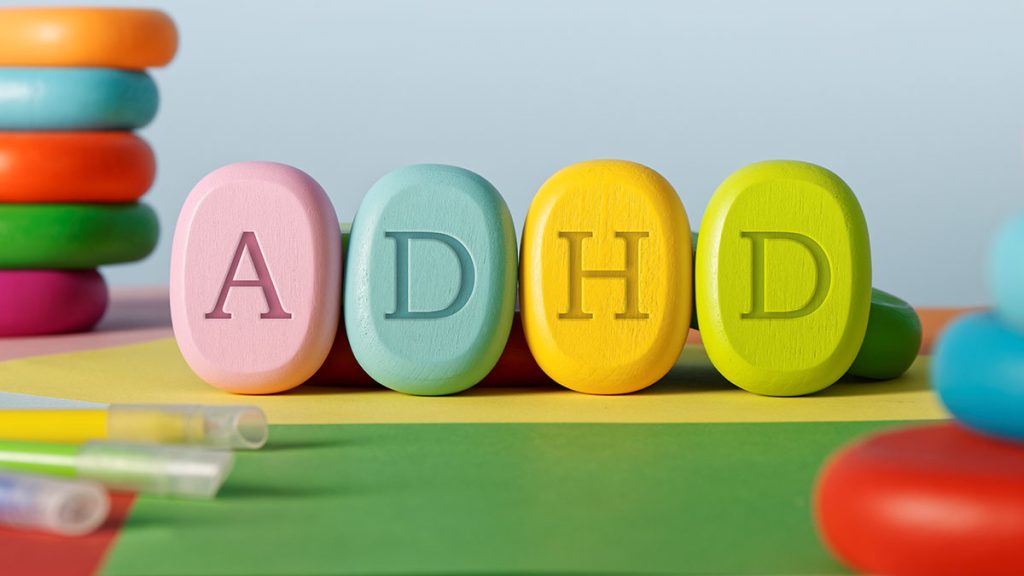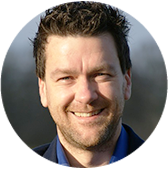Attention Deficit Hyperactivity Disorder (ADHD) is a common neurodevelopmental disorder. It is characterized by difficulty paying attention, excessive impulsivity, or a mixture of both traits. Like many neurodevelopmental conditions, it is a complex disorder with variable presentations, and is currently classified into three distinct subtypes. And, although it is commonly diagnosed in childhood, it can affect individuals of any age.
There is no “one size fits all” when it comes to the treatment of ADHD. What works for one child may not work for another. So it is essential to research alternatives to the standard treatments available. In some cases, people with ADHD find non-medication protocols like neurofeedback extremely beneficial.
At NeuroZone, our team of experts, led by Erin Badour, CCC, SLP are dedicated to providing comprehensive qEEG evaluations and treatments for those who may be suffering from ADHD. We offer individualized treatment plans tailored to each patient’s unique needs and goals using the power of neurofeedback. To schedule an appointment, please call us at one of the numbers below or fill out our online form for more information.
- Playa del Rey: (310) 821-3640
- Santa Monica: (310) 821-3640
- Redondo Beach: (424) 247-8193
About ADHD
ADHD affects approximately 5% of children and 2.5% of adults worldwide. (1) Individuals with ADHD have difficulty staying focused on tasks and maintaining attention, as well as having trouble regulating their behavior and emotions. Symptoms of the disorder can vary greatly, but all require a minimum level of impairment in two or more settings, such as home, school, or work.
How is ADHD Diagnosed?
ADHD may present differently depending on the person, and is diagnosed using the DSM – The Diagnostic and Statistical Manual of Mental Disorders (5th edition). The DSM-5, is the standard classification of mental disorders used by mental health professionals in the United States. In 2022 the revised text, known as the DSM-5TR, was published.
Although some professionals believe there could be even more, The DSM currently recognizes three primary types of ADHD:
- Hyperactive/Impulsive Type: Also known as ADHD-HI, this type of ADHD is characterized by excessive physical activity and impulsivity. These individuals often fidget, talk excessively, and struggle to remain seated.
- Inattentive Type: ADHD-I is characterized by difficulty sustaining attention and focusing on tasks. This type is often overlooked because these individuals do not display obvious signs of hyperactivity.
- Mixed Type: This type of ADHD combines symptoms of both the hyperactive/impulsive and inattentive types. It is also called ADHD-C.
It is important to note that diagnosing ADHD is not straightforward. When making a diagnosis, a clinician will consider a variety of factors, including the individual’s age, family history, and medical history. Additionally, they will take into account the individual’s current symptoms and determine if they meet the criteria outlined in the DSM.
Impulsive Type: ADHD-HI
ADHD-HI stands for Attention Deficit Hyperactivity Disorder, Hyperactive / Impulsive Type. Children with this type of ADHD are often described as “balls of pent-up energy” by parents and teachers alike. They may struggle to focus on their daily tasks, often appear disorganized, and have a “high octane” approach to life. They can often be perceived as “rude” by teachers and other students because of their tendency to interrupt and be impatient.
A physician diagnoses this variation of the condition if a patient meets 6 out of 9 of the criteria below.
- Often fidgets (e.g. plays with things in pencil case, taps fingers)
- Cannot stay seated (e.g. frequently gets up and moves around in the middle of class)
- Feels restless (e.g. feels uncomfortable sitting in one position for long periods, jiggles legs)
- Cannot play quietly (e.g. does not have conscious “volume control”, especially in an indoor setting)
- Always “on the go” , seemingly “driven by a motor” (e.g. unable to sit still in their seat for more than a few minutes)
- Talks excessively (e.g. the teacher has had to stop the lesson to address talking in class)
- Impatient (e.g. blurts out answers impulsively, cannot wait their turn)
- Interrupts others (e.g. “barges in” and disturbs the play of another group of children)
- Cannot wait their turn (e.g. taking the dice and rolling them out of order in a boardgame)
Inattentive Type: ADHD-I
Formerly known as ADD (Attention Deficit Disorder), ADHD-Inattentive Type is characterized by a lack of hyperactivity. It is considered to be a prevalent but underrecognized presentation of the neurodevelopmental disorder. (2) Though it is common in boys too, it is more frequently associated with girls. A person with ADHD-I may be labeled a “daydreamer” or “easily distracted” by parents and teachers. Adolescents and adults with ADHD-HI may struggle with arriving for meetings on time, and may make careless mistakes in their schoolwork or daily workload.
If a person matches 6 of the 9 features below, a physician may diagnose them with ADHD-I.
- Cannot sustain attention (e.g. frequently looks away from the teacher, cannot stay focused in a lecture)
- Makes careless mistakes (e.g. misses spelling errors in their work)
- May not respond when spoken to directly (e.g. does not engage, even when their name is spoken)
- Does not “follow through” (e.g. may not follow directions or finish tasks, chores, and assignments)
- Has trouble organizing tasks (e.g. cannot keep belongings in order, trouble managing time)
- Avoids tasks that require sustained mental effort (e.g. reading through a large body of text)
- Misplaces essential items (e.g. frequently loses ID card, textbooks)
- Often distracted by other stimuli (e.g. daydreaming, seeing something through the classroom window
- Forgetful in daily activities (e.g. fails to attend important meetings)
Combined Type: ADHD-C
People with ADHD-C (Combined Type ADHD) display mixed signs of both inattentiveness and hyperactivity. A physician diagnoses ADHD-C when a person displays 6 out of 9 characteristics in both hyperactive/impulsive and inattentive criteria.
QEEG Brain Mapping
QEEG brain mapping, also known as Quantitative Electroencephalography (qEEG) is a method of measuring and analyzing electrical activity in the brain. It is a non-invasive procedure that uses electrodes placed on the scalp to measure brain waves in different areas. It can be used to discover patterns in brainwave activity which can then be used to diagnose a variety of neurological issues such as ADD/ADHD, depression, anxiety, learning disorders, memory problems, sleep disorders, stroke, dementia, and more.
At NeuroZone we are dedicated to providing the most up-to-date technologies, including qEEG brain mapping, to help our patients improve their lives. We understand that the brain is complex and ever-changing, so it is important to have a comprehensive understanding of what is happening in order to address any issues that may arise. QEEG brain mapping is an invaluable tool in helping us to identify and treat neurological conditions!
No-Medication ADHD Treatment at NeuroZone
What is Neurofeedback?
Neurofeedback is a form of biofeedback that works by monitoring brainwave activity. The process involves attaching sensors to the scalp which measure electrical impulses emitted by the brain. The EEG (electroencephalogram) data is then displayed in real time on a computer screen. The patient is encouraged to modify their brainwave activity through visual and auditory cues, enabling them to better control their attention and focus.
How Can Neurofeedback Help Me with My ADHD?
Neurofeedback helps patients learn to self-regulate their attention and focus by providing real-time feedback about their brainwave activity. As the patient learns to modulate their brainwaves, they are able to better manage their symptoms. Once the patient is able to recognize patterns in their EEG readings, they can use neurofeedback to ‘tune into’ their optimal brainwave frequencies.
Neurofeedback can be used to help individuals with ADHD improve their concentration and focus, as well as reduce hyperactivity and impulsivity. Neurofeedback can also help with sleep disturbances, anxiety, depression, traumatic brain injury, and other conditions. It can also be used to boost overall performance in areas such as academics, sports, and the arts.
Find out more about neurofeedback on the NeuroZone blog!
Cost of ADHD Neurofeedback Treatment in Santa Monica
The cost of your treatment at NeuroZone will depend on your chosen protocol. Contact us today to learn more about how we can help you or your child manage ADHD. To book an appointment, call your nearest location at one of the numbers below. Our staff members are ready to answer any questions you may have and help you get started on the path to success!
- Playa del Rey: (310) 821-3640
- Santa Monica: (310) 821-3640
- Redondo Beach: (424) 247-8193
FAQ
Is qEEG brain mapping safe for children?
Yes, qEEG brain mapping is safe for children. It is often used to diagnose ADD/ADHD in children, as it can detect abnormal brain wave patterns that are associated with the condition.
Does neurofeedback help with ADHD?
Yes. Neurofeedback has been proven to be an effective treatment for individuals diagnosed with ADHD. Research shows that when combined with cognitive and behavioral therapies, neurofeedback yields even better outcomes.
What are some alternatives to neurofeedback?
There are some alternatives to neurofeedback such as cognitive behavioral therapy, mindfulness meditation, and exercise. However, these methods can sometimes take much longer to produce results, and often require ongoing maintenance. With neurofeedback, you can see lasting results quickly.
References
- Song P, Zha M, Yang Q, Zhang Y, Li X, Rudan I. The prevalence of adult attention-deficit hyperactivity disorder: A global systematic review and meta-analysis. Journal of Global Health. 2021;11(04009). doi:https://doi.org/10.7189/jogh.11.04009
- de la Peña IC, Pan MC, Thai CG, Alisso T. Attention-Deficit/Hyperactivity Disorder Predominantly Inattentive Subtype/Presentation: Research Progress and Translational Studies. Brain Sciences. 2020;10(5):292. doi:https://doi.org/10.3390/brainsci10050292





